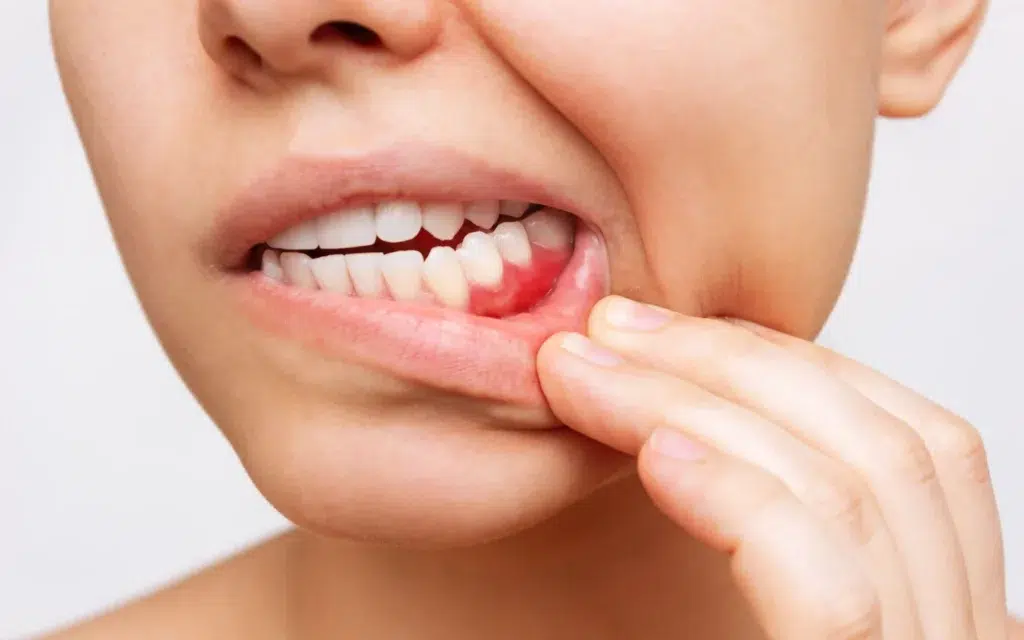Tooth recession, a common oral health issue, occurs when the gum tissue surrounding the teeth pulls away, exposing more of the tooth’s root. Left untreated, tooth recession can not only impact the aesthetics of your smile but also lead to tooth sensitivity, decay, and eventual tooth loss. In many cases, the solution to this issue lies in gum grafting—a periodontal procedure designed to restore the gumline and protect teeth from damage.
Gum grafting techniques involve transplanting healthy gum tissue onto the area affected by recession, covering the exposed tooth root and promoting the growth of new tissue. Gum grafting procedures can effectively address a variety of dental concerns, including tooth sensitivity due to root exposure, the risk of root decay, protection from further recession, and improving the cosmetic appearance of one’s smile. Utilizing gum grafting techniques, periodontists can help patients maintain their oral health and safeguard their teeth against further damage.
In this comprehensive guide, we will explore the most common causes of tooth recession, various gum grafting techniques, and the overall benefits of undergoing a gum grafting procedure. We will also delve into the recovery process and provide tips for maintaining gum health following your treatment. If you’re concerned about tooth recession and are considering gum grafting as a solution, our dedicated team at Dallas Periodontics and Dental Implants is here to guide you with expert knowledge and personalized care.
Common Causes of Tooth Recession
Tooth recession can result from a variety of factors, including:
- Aggressive Tooth Brushing: Brushing your teeth too hard or using a toothbrush with hard bristles can wear away the gum tissue, leading to recession.
- Periodontal Disease: Gum disease, caused by bacterial infections, could damage gum tissue and the supporting bone structure, ultimately resulting in tooth recession.
- Genetic Factors: Some individuals may inherit thin or weak gum tissue, making them more susceptible to gum recession.
- Orthodontic Treatment: Improperly positioned teeth can cause additional stress on the gums, potentially leading to recession.
- Teeth Grinding and Clenching: Bruxism (teeth grinding) can place excessive force on the teeth and gum tissue, contributing to the development of tooth recession.
Gum Grafting Techniques
Various gum grafting techniques can address tooth recession, with the appropriate approach depending on individual patient needs:
- Connective Tissue Graft: The most common gum grafting technique, a connective tissue graft involves removing a small piece of tissue from the patient’s palate and placing it on the exposed tooth root.
- Free Gingival Graft: Similar to the connective tissue graft, a free gingival graft takes tissue directly from the patient’s palate’s outer layer. This method is often utilized for patients with naturally thin gums.
- Pedicle Graft: A pedicle graft involves partially cutting a piece of gum tissue from an area adjacent to the recessed area and stretching it to cover the exposed tooth root. This technique is preferred when a patient has adequate gum tissue near the affected area.
Benefits of Gum Grafting Procedures
Gum grafting procedures offer a range of dental health benefits, including:
- Reduced Tooth Sensitivity: By covering exposed tooth roots, gum grafts can minimize pain and sensitivity associated with consuming hot or cold foods and beverages.
- Improved Aesthetics: Gum grafts can help even out the gumline, providing a more visually appealing and consistent appearance to your smile.
- Prevention of Further Recession: Gum grafts can strengthen the gum tissue around the teeth, thereby protecting against further recession and potential tooth loss.
- Protection from Root Decay: Covering the exposed tooth roots, gum grafts can reduce the risk of root decay caused by plaque and bacteria build-up.
Recovery Process and Tips for Post-Treatment Care
The recovery process following gum grafting treatments can be relatively simple, provided you follow your periodontist’s recommendations:
- Pain and Discomfort Management: You may experience some swelling and discomfort following the procedure. Your periodontist may prescribe pain-relievers or recommend over-the-counter medication to relieve pain during the initial recovery phase.
- Proper Oral Hygiene: Practicing gentle oral hygiene is crucial in the days and weeks following your gum graft procedure. Use a soft-bristle toothbrush, and avoid flossing or using mouthwash near the treated area until it fully heals.
- Follow-up Appointments: Attend your follow-up appointments to allow your periodontist to monitor the healing process and address any concerns.
- Dietary Adjustments: Following your gum graft, it’s important to consume a soft food diet for the first week or two. Avoiding hard, crunchy, and spicy foods will help protect the surgical site and promote healing.
Maintaining Gum Health Post-Grafting
To ensure lasting gum health following your gum graft procedure, follow these general tips:
- Proper Oral Hygiene Techniques: Brush and floss daily using gentle brushing techniques and a soft-bristle toothbrush.
- Regular Dental Check-ups: Scheduling regular dental check-ups and cleanings will help catch any potential issues before they escalate.
- Smoking Cessation: Tobacco use can negatively impact gum health and increase the risk of gum recession. Quit or reduce your tobacco consumption to promote overall dental well-being.
- Teeth Grinding Prevention: If you suffer from teeth grinding or clenching, discuss with your dental professional options for preventing bruxism and reducing the stress on your teeth and gums.
Restore Your Gumline with Gum Grafting Techniques
Gum grafts offer an effective solution for combating tooth recession and restoring the health and appearance of your gumline. With proper care and maintenance, gum grafting can provide long-lasting results, improving your smile and oral health. If you’re concerned about tooth recession and wish to explore gum grafting or other periodontal treatment options, schedule a consultation with our expert team at Dallas Periodontics and Dental Implants. Together, we can create a personalized plan to address your dental needs and help you achieve a healthy, beautiful smile.

